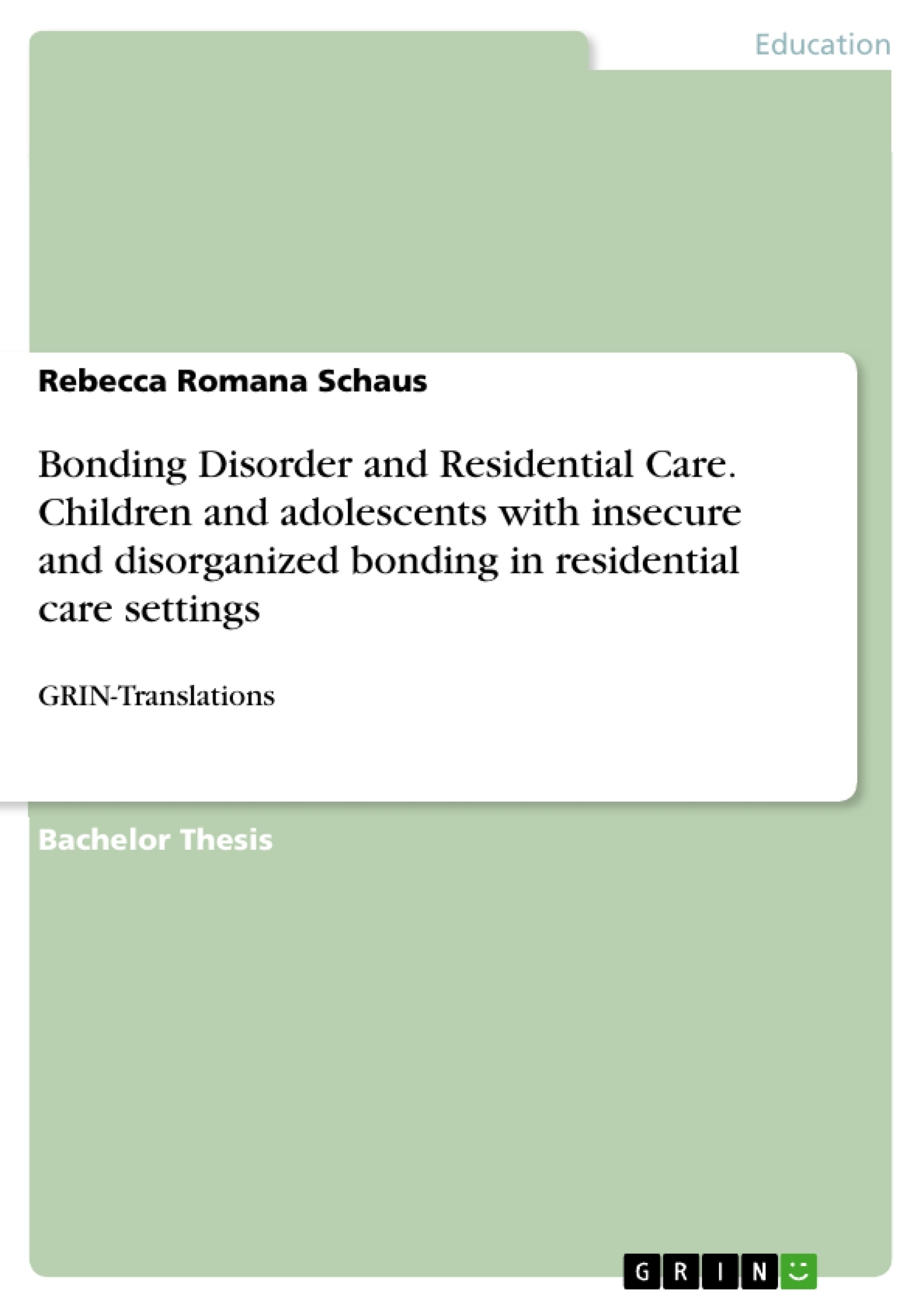This text was translated with the help of AI and reviewed by the GRIN editorial team.
Fundamental aspects of bonding theory should first be examined. Because without being aware of these theoretical foundations, bonding-sensitive action is hardly possible. Attention must also be paid to the framework conditions of home education. In recent years, especially in the type of housing, this has developed into a versatile aid for education. This also raises the question of which alternatives to classical residential groups can be found and whether these would not be more usefully suited for the accommodation of insecurely bound or traumatized children and adolescents.
However, it is also important to present the demands on the pedagogical specialists, which result from a paper based on bonding theory. Is it even possible to become a bonding person in everyday life at home? What qualifications are needed for pedagogical action? And what personal skills should specialists in home education have?
In order to understand the influence of early bonds on the development of the child, the bonding theory is theoretically presented in the second chapter of this thesis. Thus, aspects such as bonding, bonding behavior and the concept of the secure basis are explained as well as the emergence of the first bonding relationship and the inner working model. Afterwards, attention is paid to the bonding quality. The different types of bonding behavior are considered across the cv.
Chapter three is used to present various bonding disorders as categorized according to international statistical classification. However, since these groups are very general, this thesis will continue to refer to the diagnosis and typology of bonding disorders of the child and adolescent psychiatrist and psychotherapist Karl-Heinz Brisch.
The fourth chapter deals with the framework and legal foundations of home education. This provides an overview of various forms of care and living (partial) inpatient accommodation. The Child and Youth Welfare Act then serves as a basis for presenting legal framework conditions.
- Citar trabajo
- Rebecca Romana Schaus (Autor), 2014, Bonding Disorder and Residential Care. Children and adolescents with insecure and disorganized bonding in residential care settings, Múnich, GRIN Verlag, https://www.grin.com/document/1470321
-

-

-

-
¡Carge sus propios textos! Gane dinero y un iPhone X. -

-
¡Carge sus propios textos! Gane dinero y un iPhone X. -

-
¡Carge sus propios textos! Gane dinero y un iPhone X. -

-
¡Carge sus propios textos! Gane dinero y un iPhone X. -

-
¡Carge sus propios textos! Gane dinero y un iPhone X. -

-
¡Carge sus propios textos! Gane dinero y un iPhone X. -

-
¡Carge sus propios textos! Gane dinero y un iPhone X. -

-
¡Carge sus propios textos! Gane dinero y un iPhone X. -

-
¡Carge sus propios textos! Gane dinero y un iPhone X. -

-
¡Carge sus propios textos! Gane dinero y un iPhone X.

